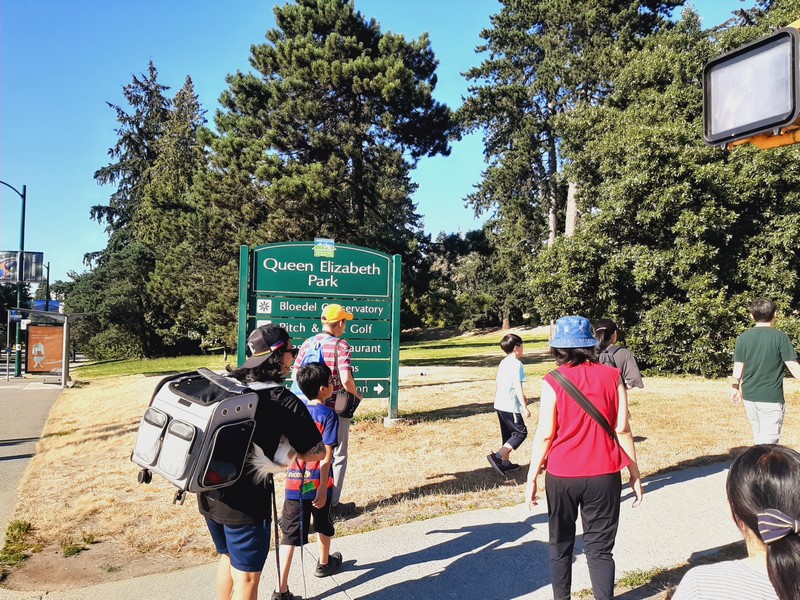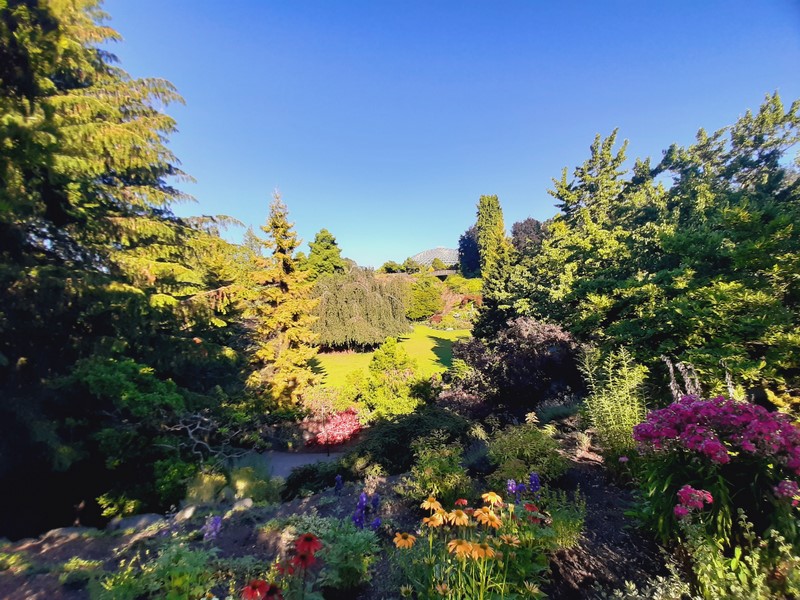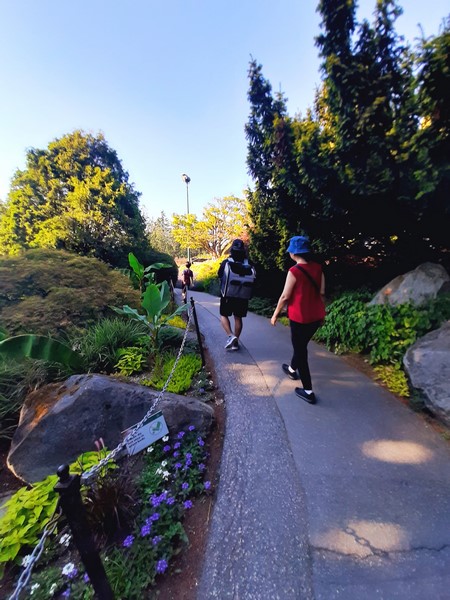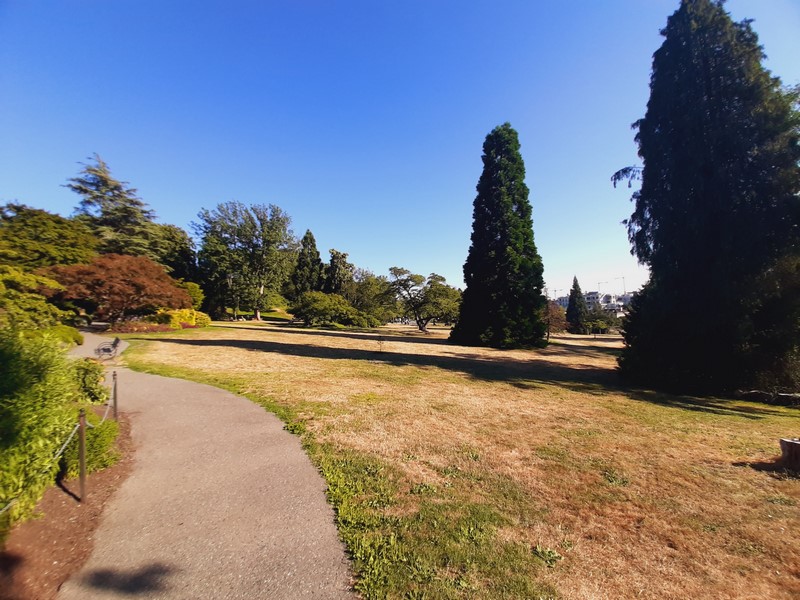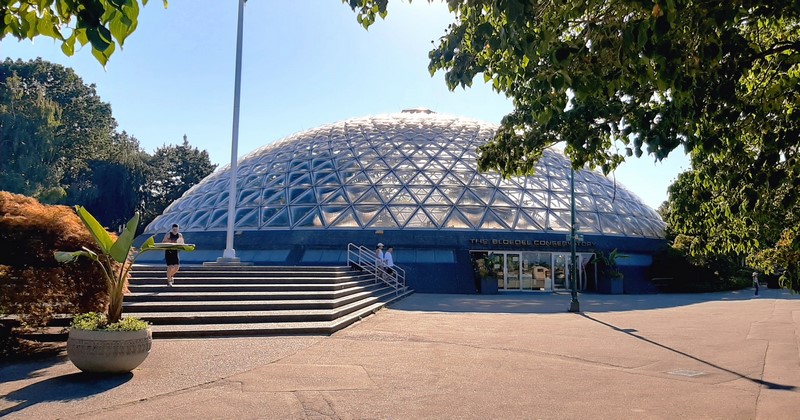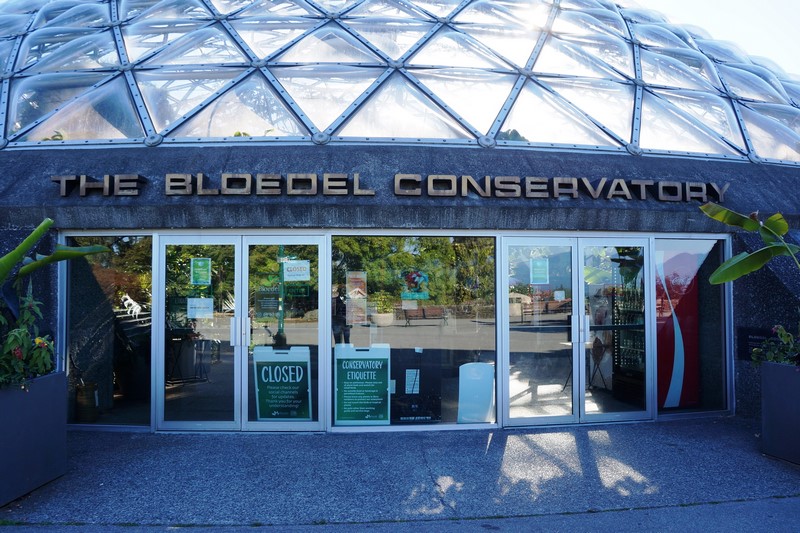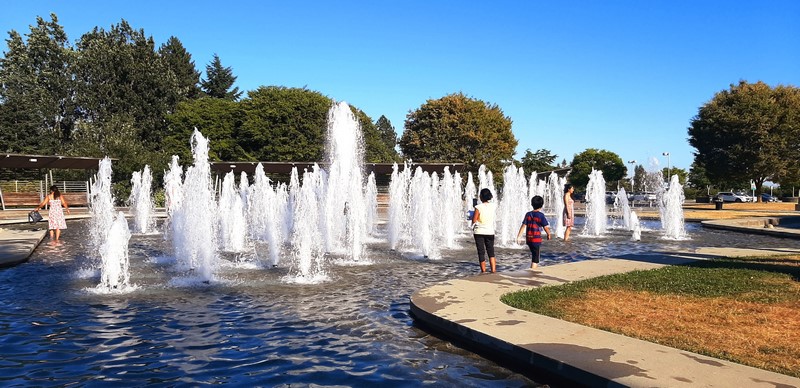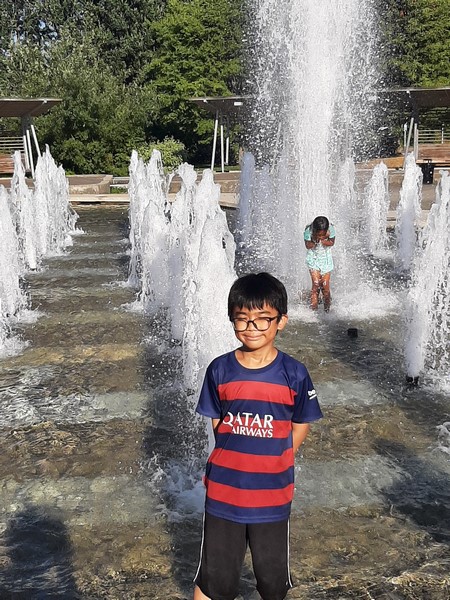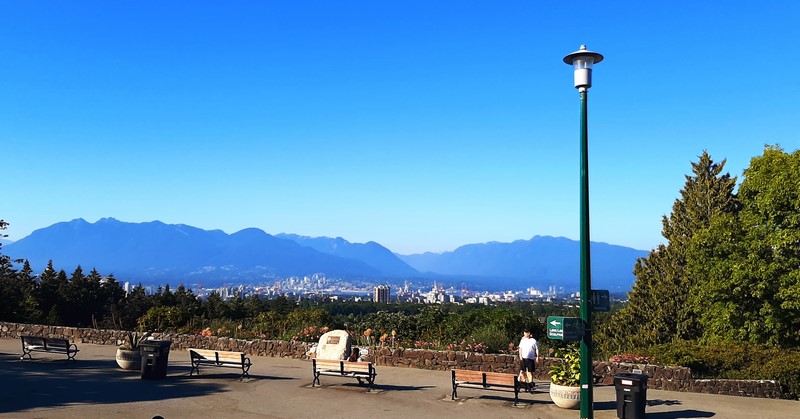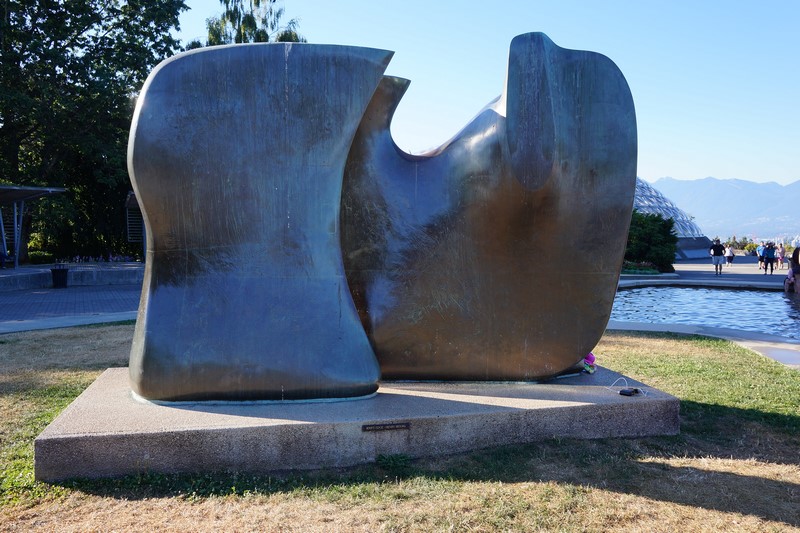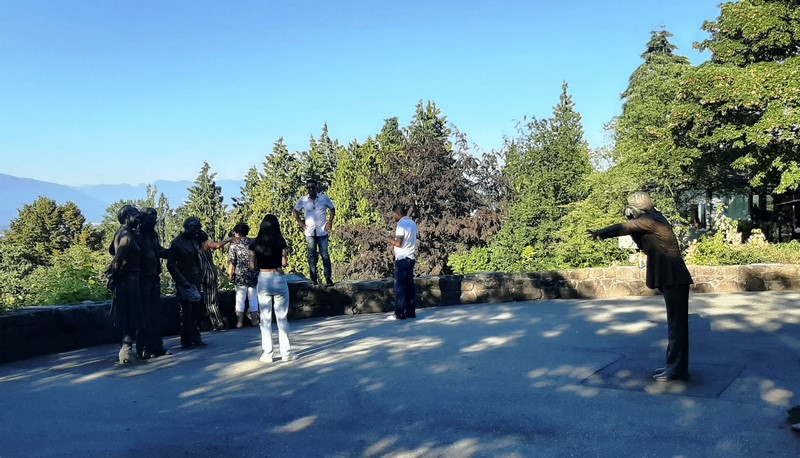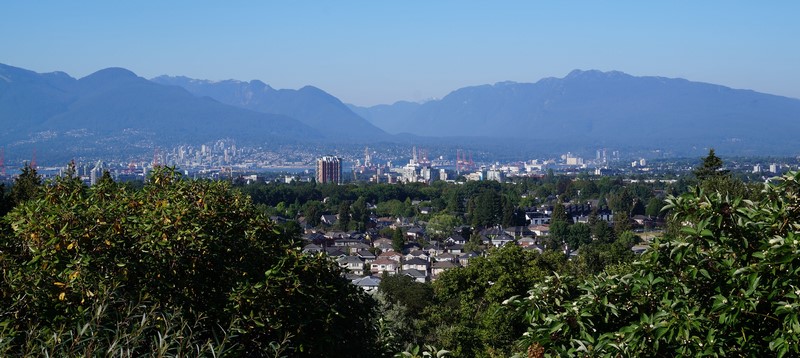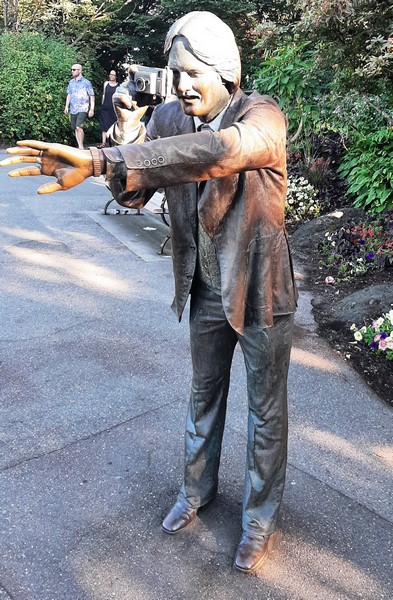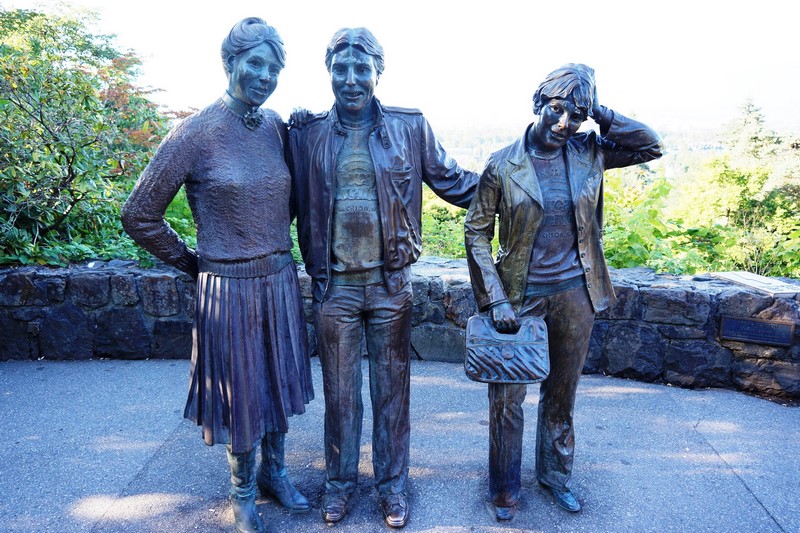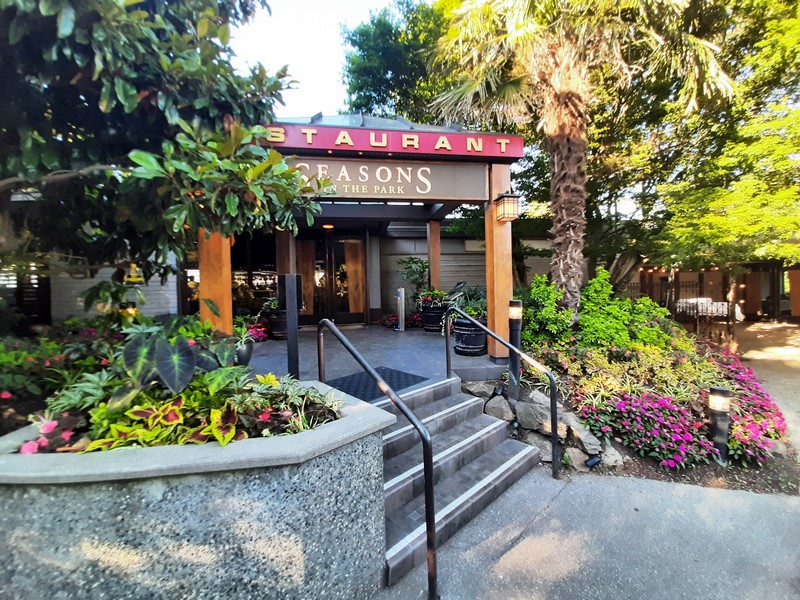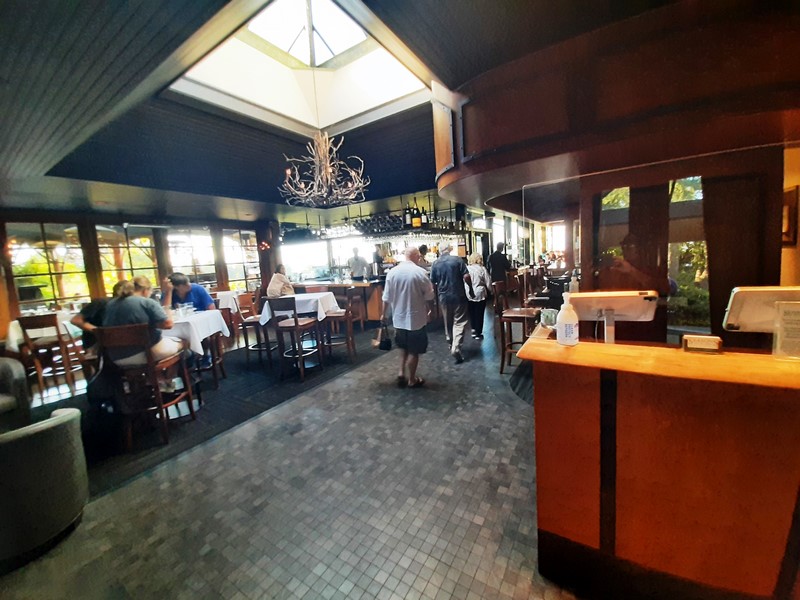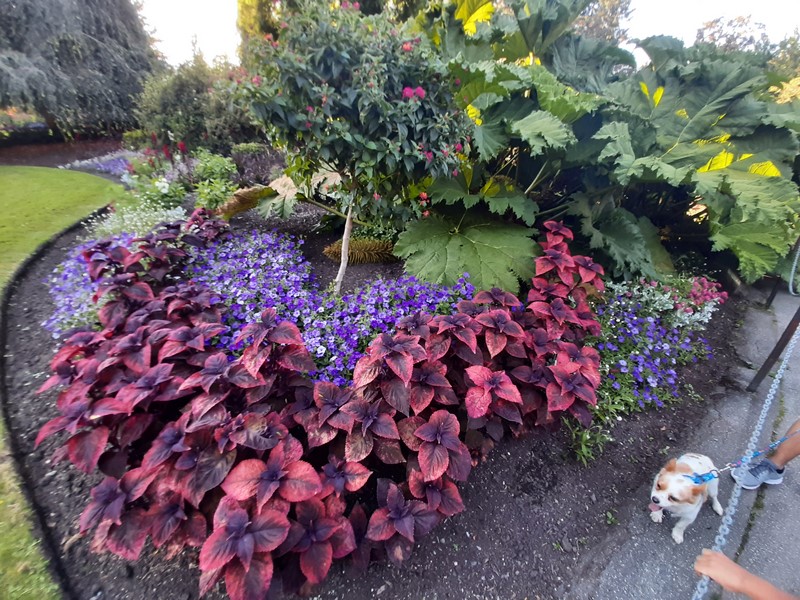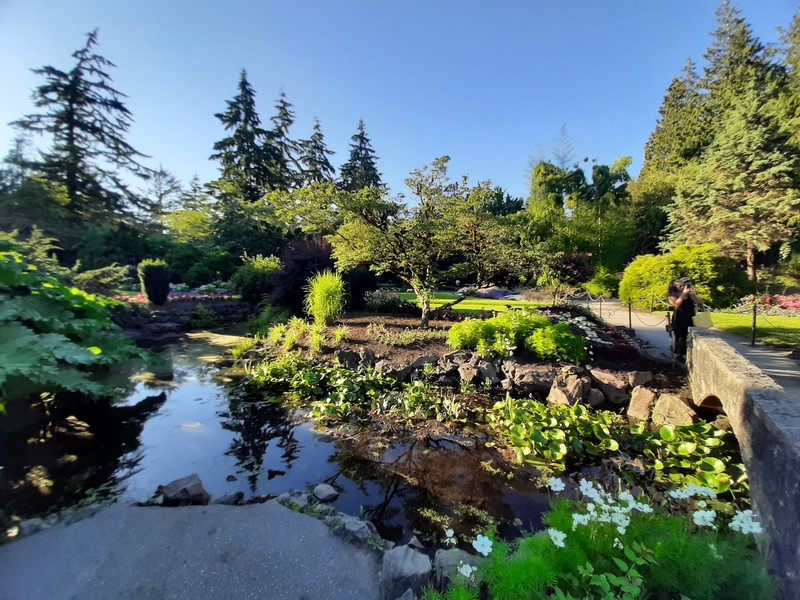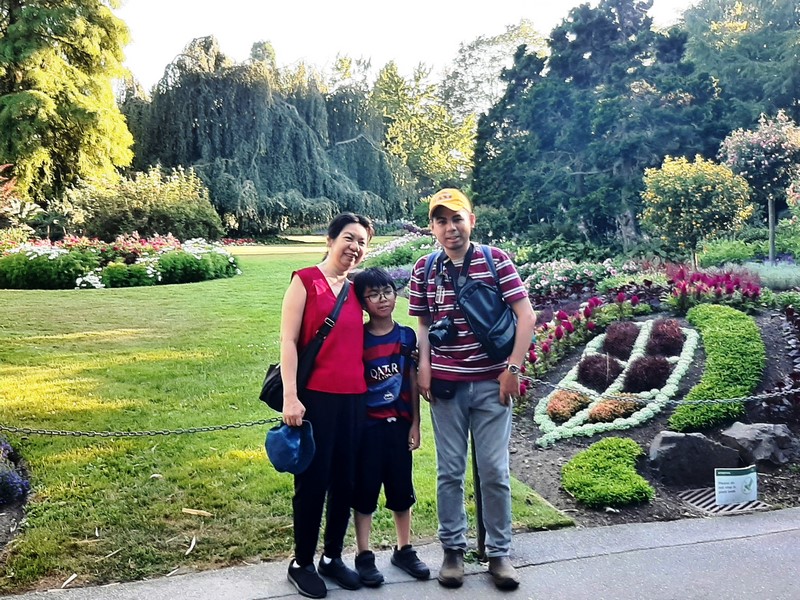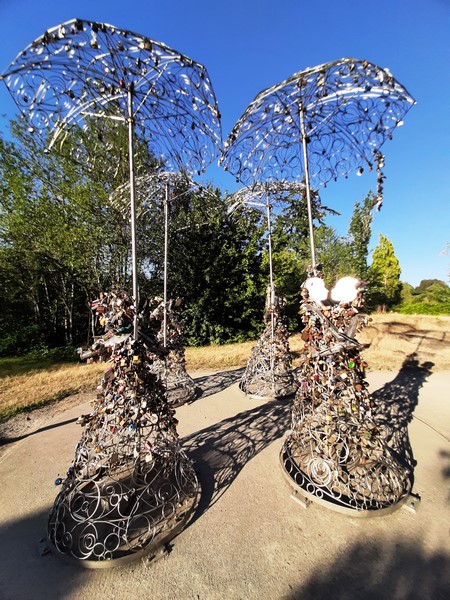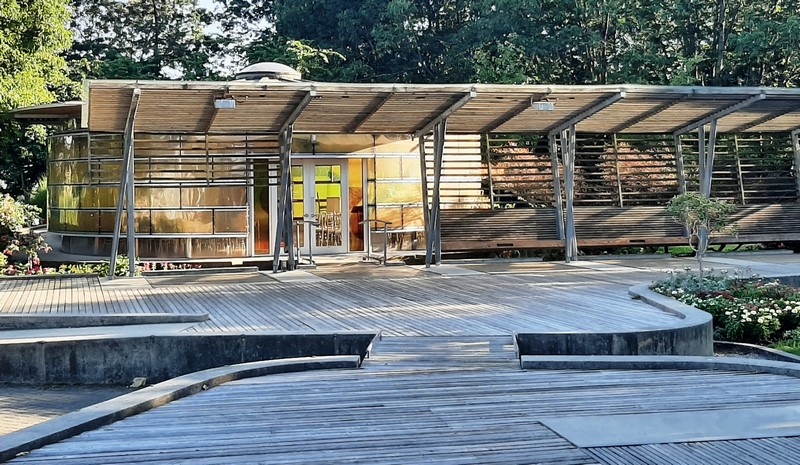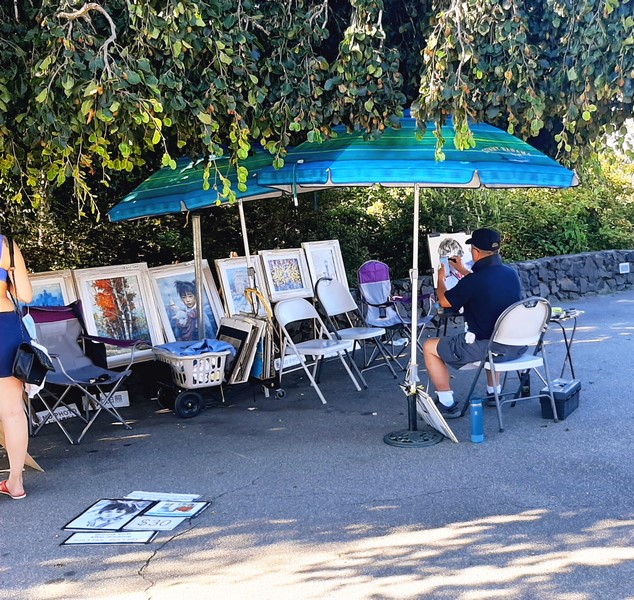As Grace, Jandy, Bryan, grandson Kyle and I, with our dog Luffy, didn’t make it in time to visit the Van Dusen Gardens, we decided to, instead, just visit the nearby 52-hectare (130-acre) Queen Elizabeth Park, Vancouver’s horticultural jewel, which was just a 1.6-km. walk via Oak Street and West 33rd Street. This municipal park, located approximately 125 m. (410 ft.) above sea level on top of Little Mountain (the highest point in Vancouver proper), at the geographic center of Vancouver, attracts more than 6 million visitors a year.
It is the location of former basalt quarries (dug in the beginning of the twentieth century to provide materials for roads in the city) that has been converted into a beautiful city park with peaceful flower gardens and trees and stunning panoramic views. It features a rose garden, the meticulously manicured Quarry Garden and an arboretum with about 1,500 native and exotic trees.
Before European settlement, the park was an old-growth forest and a spawning ground for salmon frequented by grey wolves, elk and bears. In the 1870s, settling began in earnest and the population exterminated the grey wolves, elk and bears, chopped down all the old growth forest and paved over the salmon creeks. The salmon creeks that extended, from Queen Elizabeth Park to False Creek, do still exist today but, however, they have been paved over.
In 1936, the BC Tulip Association suggested, to the city’s park board, the creation of sunken gardens within the old quarries and, by the end of that decade, the site had been turned over to the Vancouver Park Board for park and recreation purposes.
During their visit to Vancouver in 1939, King George VI, and his consort, Queen Elizabeth (the mother of Queen Elizabeth II), as King and Queen of Canada, dedicated the park. From that time, with a generous donation from the Canadian Pulp and Paper Association, park staff incrementally transformed the overgrown hillsides into Canada’s first civic arboretum.
The typically meticulously maintained Queen Elizabeth Park, one of Vancouver‘s most popular outdoor spaces (second only to Stanley Park), is a very popular area for walking near Vancouver and a great place for us to spend an afternoon. Its 2.3-km. loop trail, generally considered an easy route, takes an average of 34 mins. to complete. Often a bit busy, the park offers paved paths, hills, ponds, and lots of flowers. There is also an off leash dog park.
Check out “Stanley Park”
The most prominent structure in the park is the domed Bloedel Floral Conservatory, the country’s first geodesic conservatory, funded by Prentice Bloedel’s gift of $1.25 million (the largest the city of Vancouver had received to that date). The 43 m. (140 ft.) diameter, 21 m. (70 ft.) high triodetic dome frame, manufactured entirely in Ottawa, was shipped 3,000 miles across the country to Queen Elizabeth Park. Upon arrival, the structural framework was erected in just 10 days and the entire dome and plaza took 18 months to complete. On December 6, 1969, it was opened amidst much jubilation.
Its enclosed tropical garden, with three different climate zones, houses 500 exotic plants and flowers (bougainvilleas, browallias, citrus trees, coffee trees, eucalypti, epiphytes, euphorbia, various figs, gardenia, hibiscus, magnolia trees, lilies, yucca with pteris, etc.), more than 120 free-flying tropical birds plus an array of tropical fish. It might take you about 20 minutes to get through, depending on how interested you are in tropical plants. Too bad it was already closed during our visit.
As it was summer, kids (including Kyle) couldn’t resist playing in the Dancing Waters fountain display beside the Celebration Pavilion. Since the park sits at the highest point in Vancouver, we had had beautiful photo opportunities of spectacular views of the city skyline of Vancouver and the Coast Mountains and shoreline from the Grace McCarthy (named after the late Vice-Chairman of the Vancouver Board of Parks and Recreation) Plaza and at a lookout by the Bloedel Floral Conservatory.

Lions Clock donated in April 1995 by the Vancouver Mandarin Lions Club and the Kowloon Lions Club (Hong Kong) to commemorate the twinning of the two clubs
Several sculptures are scattered throughout the plaza. Beside the Dancing Fountain is the bronze sculpture “Knife Edge Two Piece 1962–65,” created by noted British artist Henry Moore. Bought at a cost of $150,000 (part of $1.25 million donation), it was unveiled during the opening day of the new Bloedel Floral Conservatory in 1969. With neither front or back, the sculpture was meant to be seen from all angles and, as you move around, from the west and east sides.
At a lookout by the Bloedel Floral Conservatory is the bronze, life-size, multi-figure sculpture The Photo Session, one of the “man in the street” series of sculptures created by American sculptor J. Seward Johnson, Jr. (born 1930 and heir of the Johnson & Johnson pharmaceutical fortune) and installed in 1984.
It depicts a man with a camera photographing three people (two women and a man). Real people, like us, joined the appealing statues to have our pictures taken.
In June 2008, the figure of the photographer was stolen by metal thieves but was, fortunately, found abandoned and unharmed, two months later, in an Aldergrove field.
We were planning to dine at the highly rated Seasons in the Park, located right at the top of Queen Elizabeth Park but tables by the window and the al fresco dining area, both wonderful places from which to enjoy the views, were full. US Pres. William “Bill” Clinton and Russian Federation Pres. Boris Yeltsin dined here on April 3, 1993.
Instead, we went down a trail to the popular Quarry Gardens. Redesigned by Park Board Deputy Superintendent Bill Livingstone, it was unveiled in the early 1960s.
It is similar, in some ways, to the famous Sunken Garden at Butchart Gardens in Victoria (British Columbia’s capital city) which we visited just two days ago. Both beautiful and located on the former site of a mining rock quarry.
Check out “Butchart Gardens”
On a lookout above the Quarry Garden is the 5.5 m. (18 ft.) diameter and 4.3 m. (14 ft.) high Love in the Rain sculpture, designed and fabricated with stainless steel by well-known Vancouver artist Bruce Voyce, was installed in August 2016.
This new public art project, embodying love in the temperate forest, depicts four entwined couples celebrating the shelter that love brings and the union that it forms. The public was invited to celebrate their love by lovingly attaching locks to the skirts of each couple. It has an integrated receptacle on site for the keys to be melted down to become part of a future sculpture.
Other attractions in the park include a Painters’ Corner, a pitch and putt golf course, Little Mountain disc golf course, tennis courts, lawn bowling club and offers tai chi and jogging. Several episodes of the long running TV show Stargate SG-1 were filmed there. Aside from summer, the best times to visit Queen Elizabeth Park are in the spring (for the flowers) and fall (for the autumn leaves).
Queen Elizabeth Park: 4600 Cambie St. cor. 33rd Ave., Vancouver, British Columbia V6J 5L1, Canada. Tel: (604) 873-7000. Admission to the park is free. Bloedel Floral Conservatory admission: $8 (adult). Coordinates: 49°14′32″N 123°06′54″W.
How to Get There: Queen Elizabeth Park is located across the street from the Hillcrest Aquatic Centre (at 4575 Clancy Loranger Way) and Nat Bailey Stadium (where the Vancouver Canadians baseball team plays and where the Riley Park Farmers Market takes place). The park is also accessible, via the Canada Line, on the SkyTrain. The Oakridge-41st Avenue Station and the King Edward SkyTrain Station are within walking distance of the park. There is free on-street parking down the hill though on Cambie St. and along West 29th Ave. and Midlothian Ave., by the northern end of the park.


